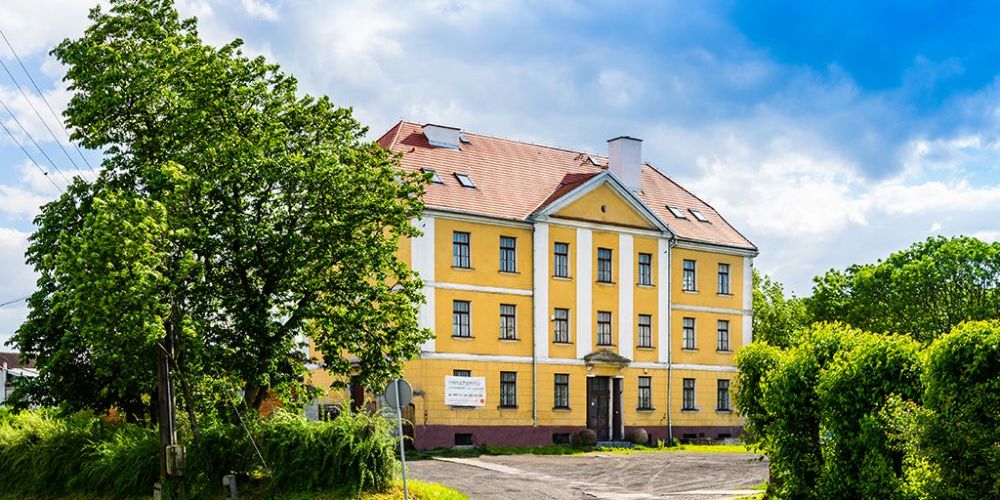Grants for conservation works on historic properties
The state supports owners of historic properties in the reconstruction, renovation and protection of buildings.
Main sources of funding for the renovation of the monument:
Subsidy from the Minister of Culture and National Heritage and the Voivodeship Conservators of Monuments
Both individuals and local governments and other organizations that own historic properties can apply for such a subsidy. The funding is provided by the Minister of Culture and National Heritage or the Voivodeship Conservator of Monuments as part of announced programs.
Importantly, such a subsidy may only be awarded for work on a building entered in the register of monuments maintained on the basis of:
- Act on the Protection and Care of Monuments of 2003 (Journal of Laws of 2003 No. 162 item 1568);
- Regulation of the Minister of Culture and National Heritage of 2011 on keeping a register of monuments stolen or illegally exported abroad (Journal of Laws of 2011, No. 113, item 661).
Therefore, an entry in the municipal register is not enough.
Funding for the renovation of a monument is granted for the costs necessary to carry out conservation, restoration or construction work. It can be obtained for work planned or already carried out (up to 3 years back, if completed).
The subsidy amount may be up to 50% of the necessary expenditure or up to 100% in the case of monuments of exceptional historical, artistic or scientific value or when the condition of the property requires immediate commencement of works or the use of advanced technologies.
This may be useful to you: Revitalization and protection of monuments – what is worth knowing when planning an investment?
Grants from local government units for the renovation of monuments
Funding for works on monuments can also be obtained from municipalities, counties and provinces . The principles for granting such subsidies are regulated by the Act on the Protection and Care of Monuments, as well as by resolutions of the decision-making bodies of each local government unit.
Entities that hold legal title to historic properties may apply for support. Local government subsidies are awarded for work on both buildings entered in the register of historic buildings and those listed in the municipal register of historic buildings.
Funding for the renovation of a monument from local government concerns the expenditure necessary for conservation, restoration or construction works. The detailed scope of the financed works is specified by local resolutions.
A subsidy from local government can cover up to 100% of necessary expenditure , but local resolutions may set other limits.
Read also: What is revitalization? Reactivation of buildings and cooperation with local government
European funds for the renovation of historic properties
Financial support for works on monuments can also be counted on the EU. There are programs co-financed by EU funds, such as regional programs in marshal offices or the FEnIKS program.
It is worth knowing that usually, EU subsidies for the renovation of monuments can be used by cultural institutions, non-governmental organizations, churches and religious associations, not individuals. Programs supported by EU funds most often also require an own contribution.
Relief for monuments – when can it be deducted?
A different type of support for renovation of historic buildings than subsidies is the relief for historic buildings . This is not a direct subsidy, but a tax relief. It consists of deducting part of the incurred expenses from the tax base. It is available to individuals regardless of the form of taxation.
Based on the relief for monuments, you can deduct 50% of the amount of expenses incurred for:
- documented payments to the renovation fund of a cooperative or housing community for a monument that is entered in the register or records of monuments;
- construction, restoration and conservation work on a monument entered in the register , if the Provincial Conservator of Monuments issued a permit before the commencement of the work and a certificate of completion of the work after its completion, VAT invoices from an active VAT payer are also required.
You cannot deduct expenses financed or co-financed by other programs or deducted under other reliefs. The deduction should be made in the tax return for the year in which the expenses were incurred (renovation fund) or for the year in which the invoice was issued and the conservator issued a certificate (works).
Find out more: Thermal modernisation of secondary market buildings – what does it include and is it tax deductible?
Is it possible to combine funding for the renovation of monuments from different programs?
Grants for conservation work on monuments can be obtained from various entities:
- Ministry of Culture and National Heritage,
- Provincial Conservators of Monuments,
- local government units,
- EU funds.
Within one investment, you can use subsidies from the minister, conservator and local government . Only EU subsidies and the relief for monuments cannot be combined with other programs. Remember that the total amount of subsidies from various sources cannot exceed 100% of the costs necessary to carry out conservation, restoration or construction works.
Are you looking for a property to invest in? Check: Sprzedaż nieruchomosci - oferty online | Orange Nieruchomości
